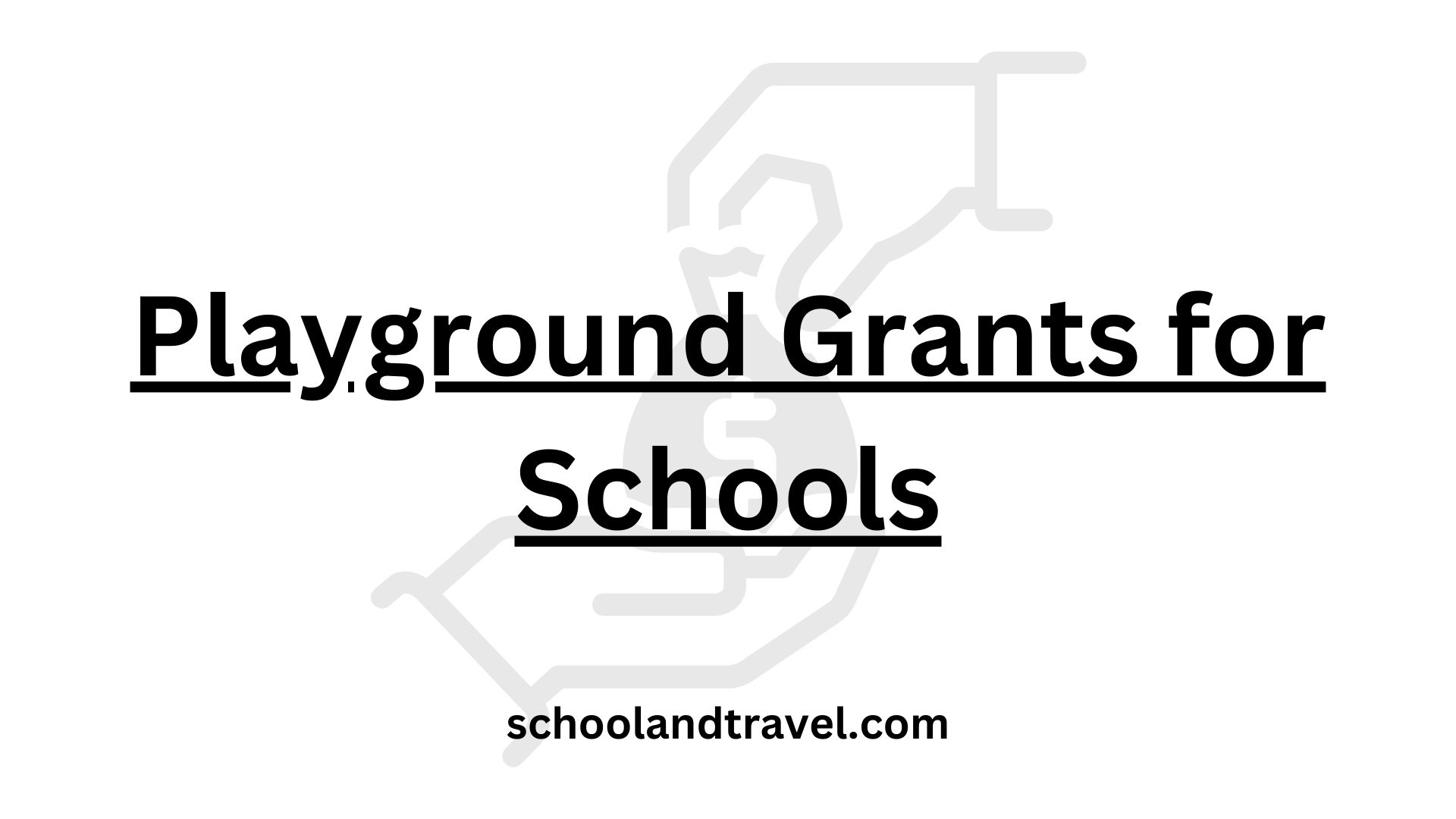Playgrounds are essential for children’s physical, social, and cognitive development.
However, many schools need help finding and maintaining safe and engaging playgrounds.
That’s where playground grants come in. Playground grants provide financial support to schools, enabling them to create or improve their playground facilities.
This article will explore the importance of playground grants for schools and how they can positively impact students’ learning experiences.
What are Playground Grants?
Playground grants are financial resources provided to schools and educational institutions to support the development, improvement, or renovation of playground facilities.
These grants aim to create safe, inclusive, and engaging play spaces for children.
They can be obtained from various sources, including government agencies, non-profit organizations, foundations, and corporate sponsors.
Playground grants typically cover the costs of equipment, installation, surfacing materials, and other necessary elements to ensure the playground’s quality and safety.
By receiving these grants, schools can enhance their outdoor spaces, promote physical activity, and provide students with opportunities for active play, social interaction, and skill development.
Playground grants are vital in creating vibrant and enriching environments for children to thrive and grow.
5 Playground Grants for Schools
1. W.K. Kellogg Foundation Grants
The W.K. Kellogg Foundation is a renowned philanthropic organization that significantly supports school playground grants.
Focusing on creating lasting and transformative change for children, the foundation recognizes the importance of providing high-quality education and promoting healthy lifestyles.
Through their commitment to engaging with and promoting community leaders, starting with children, the W.K. Kellogg Foundation ensures that schools have the resources needed to establish playgrounds that facilitate learning, physical activity, and holistic development.
The foundation’s rolling funding cycle and varying grant amounts make it accessible for schools seeking to create safe and engaging play spaces for their students.
2. Walmart Local Community Grants
Walmart Local Community Grants offer a valuable opportunity for schools to secure funding for playground projects.
While these grants are intended for the betterment of communities, schools that aim to benefit their local communities through playground initiatives are welcome to apply.
With the ability to submit up to 25 applications and receive 25 grants, schools have a higher chance of obtaining the funding they need.
The grant amount varies from $250 to $5,000, providing financial support for various aspects of playground development, including equipment, safety enhancements, and innovative play features.
3. Aldi Smart Kids Grants
Aldi Smart Kids is a remarkable program that recognizes the significance of promoting children’s health and well-being.
This initiative extends its support to organizations prioritizing various aspects of a healthy lifestyle, including athletics, education, nutrition, and more.
Aldi Smart Kids offers school playground grants as part of their commitment to fostering a positive impact.
These grants, available divisionally, allow schools to enhance their playgrounds and promote physical activity among students.
With grants ranging from $100 to $5,000, schools can create engaging and inclusive play spaces that contribute to children’s overall health and development.
4. Project Fit America Grants
Project Fit America is an exemplary initiative that brings the benefits of playground grants to schools nationwide.
This program focuses on enhancing the health and fitness of students by providing state-of-the-art fitness equipment, curriculum, and teacher training.
By incorporating fitness into the school day, Project Fit America promotes physical activity, healthy lifestyles, and overall well-being.
The playground grants provided through this program create an environment that inspires children to be active, improve their physical fitness, and develop lifelong healthy habits.
By combining play and fitness, Project Fit America empowers students to thrive academically and socially while instilling the importance of an active lifestyle.
5. KaBOOM! Grants
This is a renowned non-profit organization dedicated to providing playground grants for schools nationwide.
With a mission to create great play spaces for children, KaBOOM! Works collaboratively with communities, schools, and partners to build safe and engaging playgrounds.
Their grant programs provide funding, resources, and support to help schools transform their outdoor spaces into vibrant play areas that promote physical activity, social interaction, and imaginative play.
By partnering with KaBOOM!, schools can access the expertise and resources needed to create inclusive and joyful playgrounds that enhance their students’ overall well-being and development.
Read more:
- Top 10 Business Internships For High School Students
- 7+ Coding Internships For High School Students (FAQs)
- 7+ Tips To Find Internships in the UK as International Students
- 5 Best Law Internships For High School Students (FAQs)
- 5 Reasons To Do An Internship Abroad (Expert Research)
Benefits of Playground Grants for Schools
Playground grants offer numerous benefits for schools, students, and the learning environment. Here are some key advantages:
1. Physical Health
First and foremost, they encourage regular physical activity, which is essential for maintaining a healthy weight, strengthening muscles and bones, and improving overall cardiovascular fitness.
Playing activities like running, climbing, swinging, and jumping on the playground helps children develop motor skills, coordination, balance, and agility.
Additionally, playgrounds allow children to engage in unstructured play, allowing them to exert energy, release stress, and enhance their endurance.
2. Social Development
Playground grants for schools have a significant impact on the social development of students.
By providing well-designed play areas, these grants promote social interaction, cooperation, and the development of essential social skills.
Students engage in collaborative play, group activities, and imaginative games, fostering teamwork, communication, and conflict-resolution abilities.
Playground environments encourage inclusivity and acceptance, allowing children to interact with peers from diverse backgrounds and promoting empathy and understanding.
Through shared experiences and play, students develop friendships, build social connections, and strengthen their sense of belonging within the school community.
3. Cognitive Development
By providing well-designed play areas, these grants create opportunities for children to engage in activities stimulating their cognitive abilities.
Students can enhance their critical thinking, decision-making, and problem-solving skills through imaginative play, problem-solving games, and creative exploration.
Playgrounds offer spaces where children can experiment, make discoveries, and develop their spatial awareness, memory, and attention skills.
These cognitive benefits extend beyond the playground, positively impacting academic performance and overall cognitive development.
By fostering a playful and stimulating environment, playground grants contribute to the holistic growth of students and promote a lifelong love for learning.
4. Emotional Well-being
Emotional well-being is an essential aspect of a child’s overall development, and playground grants can significantly contribute to fostering positive emotional health.
By creating engaging and inclusive play spaces, these grants provide children with opportunities to explore, express themselves, and engage in activities that promote emotional well-being.
Playgrounds allow children to release pent-up energy, reduce stress, and experience joy and laughter, which are crucial for emotional balance.
Moreover, interactive and cooperative play on well-designed playgrounds encourages social connections, empathy, and emotional intelligence.
By prioritizing emotional well-being, playground grants create environments supporting children’s mental and emotional growth, contributing to their happiness and resilience.
5. Inclusive Environment
One significant benefit of playground grants for schools is creating an inclusive environment for all students.
Inclusive playgrounds are designed to accommodate children of diverse abilities, ensuring that every child can participate and enjoy playtime together.
These inclusive spaces feature accessible equipment, ramps, sensory elements, and supportive structures that cater to a wide range of physical, sensory, and cognitive needs.
By fostering inclusivity, playground grants promote equality, encourage empathy, and teach children the value of diversity.
Inclusive environments allow all students, regardless of their abilities, to engage in active play, build friendships, and experience a sense of belonging, fostering a supportive and inclusive school community.
6. Academic Enhancement
Playground grants offer more than just physical play opportunities; they also provide significant academic enhancement benefits.
By incorporating educational elements into playground designs, these grants promote learning and academic growth in a fun and engaging manner.
Features such as educational panels, interactive games, and nature exploration areas foster curiosity, problem-solving skills, and critical thinking abilities.
Moreover, incorporating outdoor classrooms or learning spaces allows teachers to conduct lessons in a dynamic environment, stimulating creativity and knowledge retention.
By combining play and education, playground grants contribute to a holistic approach to learning, ensuring students have access to a well-rounded educational experience that nurtures their cognitive development and academic success.
FAQs on Playground Grants for Schools
Schools can typically apply for playground grants by following the application process outlined by the granting organization. This may involve submitting a proposal detailing the school’s needs, project plans, budget, and the intended impact of the playground on students. Some grant programs may have specific eligibility criteria or application deadlines, so schools must carefully review the guidelines and requirements.
Playground grants can cover various expenses for developing or renovating a school playground. This may include purchasing play equipment, safety surfacing materials, installation costs, landscaping, accessibility features, and other related expenses.
No, playground grants are often available to public and private schools and other educational institutions such as preschools and childcare centers.
Many playground grants require recipients to provide progress reports, financial documentation, and project updates to the granting organization. This allows the grant provider to ensure the funds are being used appropriately and to assess the impact of the playground on the school community.
Conclusion
Investing in playground grants for schools is a worthwhile endeavor that yields significant benefits for students.
By securing these grants, schools can create safe, inclusive, and stimulating environments that promote physical activity, social interaction, and cognitive development.
A well-designed playground can catalyze enhanced learning experiences, fostering creativity, problem-solving, and critical thinking skills.
Educators, parents, and community members should advocate and seek out playground grants to ensure every child can access a high-quality play environment.
Awesome one; I hope this article answers your question.
Editor’s Recommendations:
- 11+ Top Christianity Questions And Answers (FAQs)
- 100+ General Awareness Questions And Answers
- Top 10 Business Internships For High School Students
- 7+ Coding Internships For High School Students (FAQs)
- 7+ Tips To Find Internships in the UK as International Students
- 5 Best Law Internships For High School Students (FAQs)
- 5 Reasons To Do an Internship Abroad (Expert Research)
- University Of Birmingham Law Entry Requirements (FAQs)
- 5 Top Universities In the UK For Physiotherapy (FAQs)
- 5 Best Geology Universities in the UK (FAQs)
If you find this article good, please share it with a friend.


